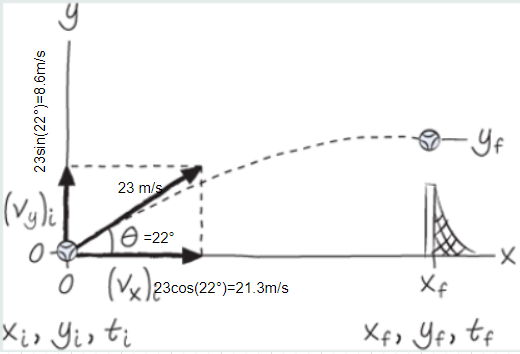Match the answers with questions based on Example 3.10 (I attached pictures of example 3.10 from the textbook) 1.) ball's initial speed 2.) ball's initial speed along the x-component 3.) ball's initial speed along the y-component 4.) ball's initial velocity 5.) ball's acceleration along the y-component 6.) ball's acceleration along the x-component A. 23 m/s, 22° from the horizontal B. 9.8 m/s2 C. -9.8 m/s2 D. 8.6 m/s E. 23 m/s F. 0 G. 21.3 m/s
Match the answers with questions based on Example 3.10 (I attached pictures of example 3.10 from the textbook)
1.) ball's initial speed
2.) ball's initial speed along the x-component
3.) ball's initial speed along the y-component
4.) ball's initial velocity
5.) ball's acceleration along the y-component
6.) ball's acceleration along the x-component
| A. |
23 m/s, 22° from the horizontal |
| B. |
9.8 m/s2 |
| C. |
-9.8 m/s2 |
| D. |
8.6 m/s |
| E. |
23 m/s |
| F. |
0 |
| G. |
21.3 m/s |


The velocity has a magnitude and a direction, the magnitude is called speed.
The horizontal and vertical components of the velocity are shown in figure below.

In projectile motion the x and y directions are independent, as gravity acts only vertically the x direction is unaffected, hence in horizontal direction the particle moves with constant velocity whereas vertically it experiences acceleration due to gravitation.
Trending now
This is a popular solution!
Step by step
Solved in 2 steps with 1 images
